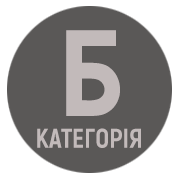Literature text with the game aimed at the process
DOI:
https://doi.org/10.32782/2617-3921.2021.20.206-214Keywords:
game, postmodernism, discourse, meta-novel, literature, parody, ironyAbstract
The aim of this paper is to examine some issues concerning the problem of game in postmodernist literature. The aesthetics of postmodernism has become not only a form of translation of ideas, but a form of cultural paradigm. The main ideas are not those of order and regularity, but of variety and game. Taking into account the variety of social and cultural content, we may view it not only as the spatiotemporal limited situation, but rather as a discourse. The postmodern spirit of game includes carnival peculiarity, as M. Bakhtin noticed it to be the universal power of culture. At the same time, the basic functions are preserved: in the context of postmodern poetics this versatility is being transformed into the impossibility to isolate the game, it all becomes soaked by it. Postmodernist author creates this mess by means of certain rules he invented himself. The author intends to replace one system with the help of a new one, and in the postmodern literature, the game itself becomes the center of a this newly formed system. Within the framework of the game implementation, irony, mimicry (imitation), parody, pastiche and intertextuality – are actualized. We should also bare in mind that the idea of creating the game-playing environment leads to the creation of a special game-playing text. The specific feature of the postmodern literary discourse is the existential definition of reality as a game of existence. A playing novelist creates playing narrators and characters, who perform certain functions, and sometimes even know them and tell the reader about them. Instruments of game orientation, used by postmodern authors is in close relation with parody on common genre traditions. It is expressed by the text constructed by means of the game kaleidoscope. The gaming kaleidoscope includes a mirror-like symmetry, symmetrical, gaming manipulation, character-actors are rearranged from one place to another, genre models are often combined, the role of the narrator is constantly changing all the time and the action is aimed to be of the theatrical nature.
References
Делез Ж. Логика смысла. Москва : Академия, 1995. 215 с.
Ильин И. Постструктурализм. Деконструктивизм. Постмодернизм. Москва : Интрада, 1996. 255 с.
Beaujour M. The Game of Poetics. Yale French Studies. Yale University Press, 1968. № 41. P. 58–67.
Hutcheon L. Irony’s Edge. The Theory and Politics of Irony. London : Routledge, 1994. 264 p.
Hutcheon L. Narcissistic Narrative: The Metafictіonal Paradox. Ontario : Wilfrid Laurier University Press, 1980. 169 p.
Stonehill B. The Self-conscious novel. Artifice in Fiction from Joyce to Pynchon. Philadelphia : University of Pennsylvania Press, 1988. 221 p.
Todorov T. The Fantastic: A Structural Approach of а Literary Genre. Ohio, 1973. 300 p.
Waugh P. Metafіction. The Theory and Practice of Self-conscious Fiction. London, 1984. 278 p.



